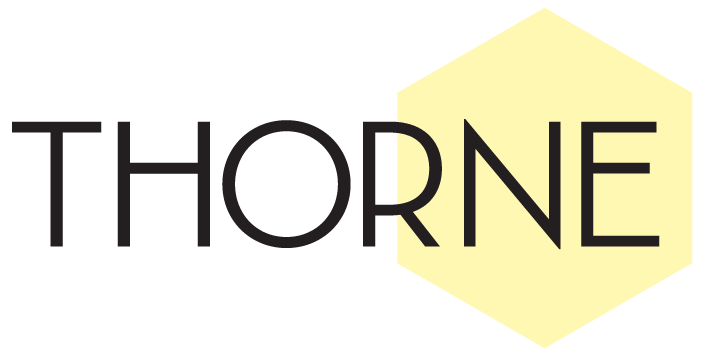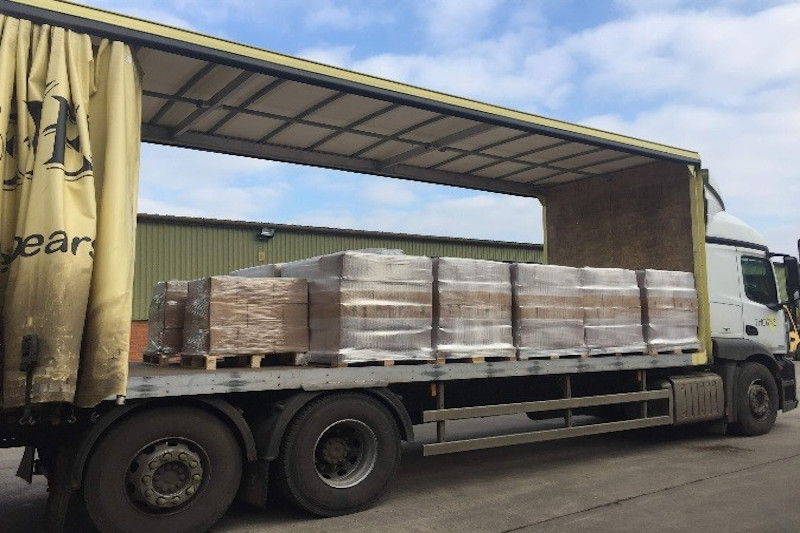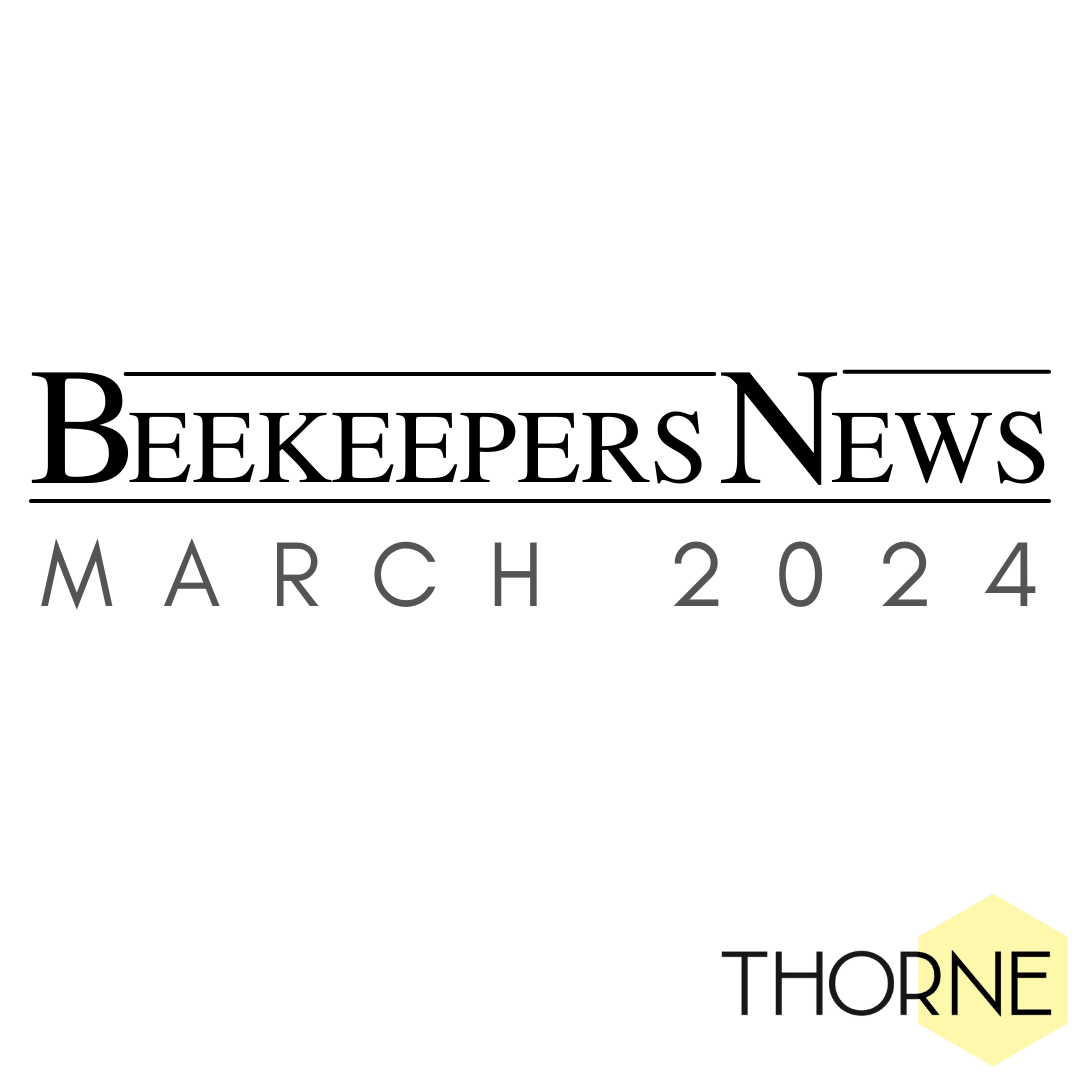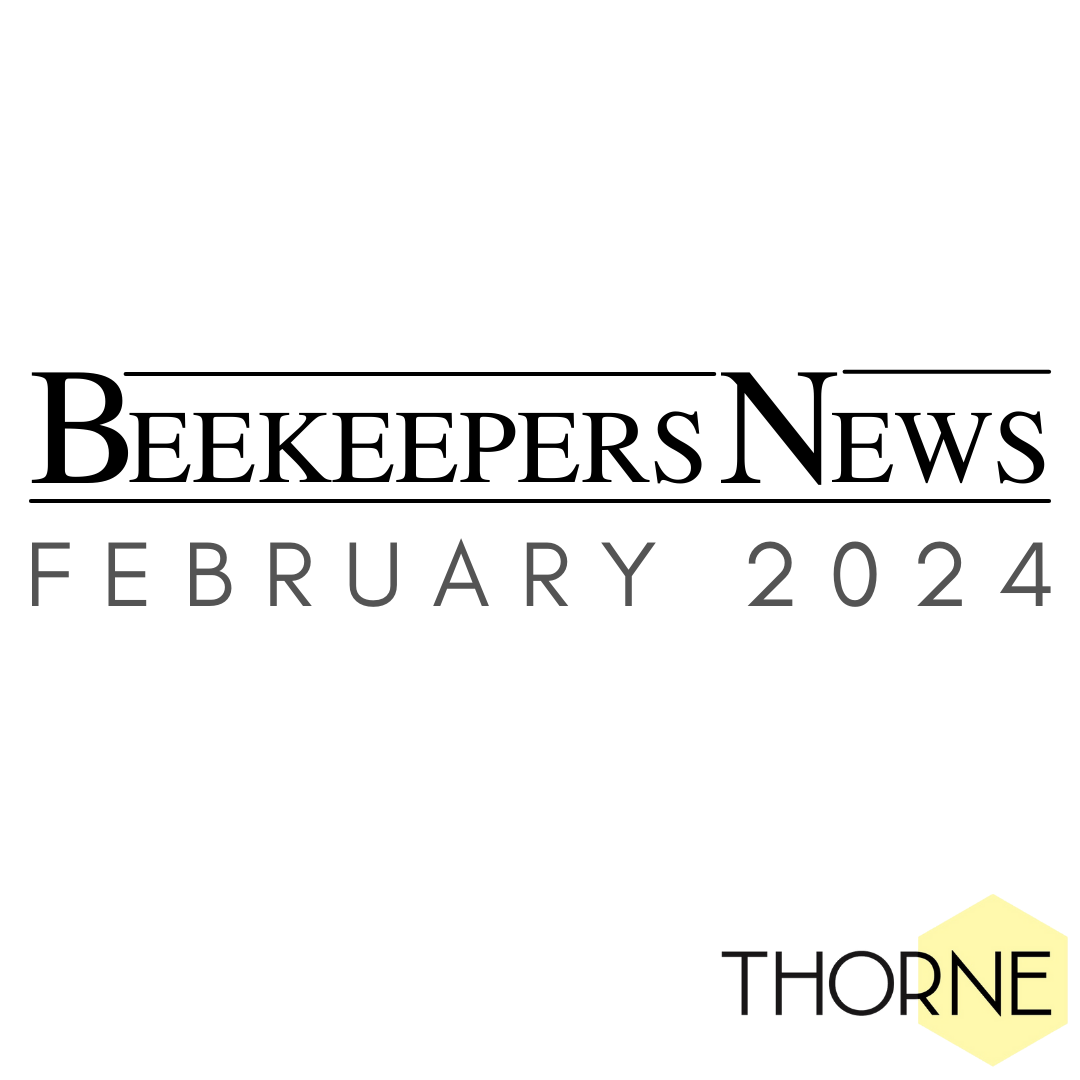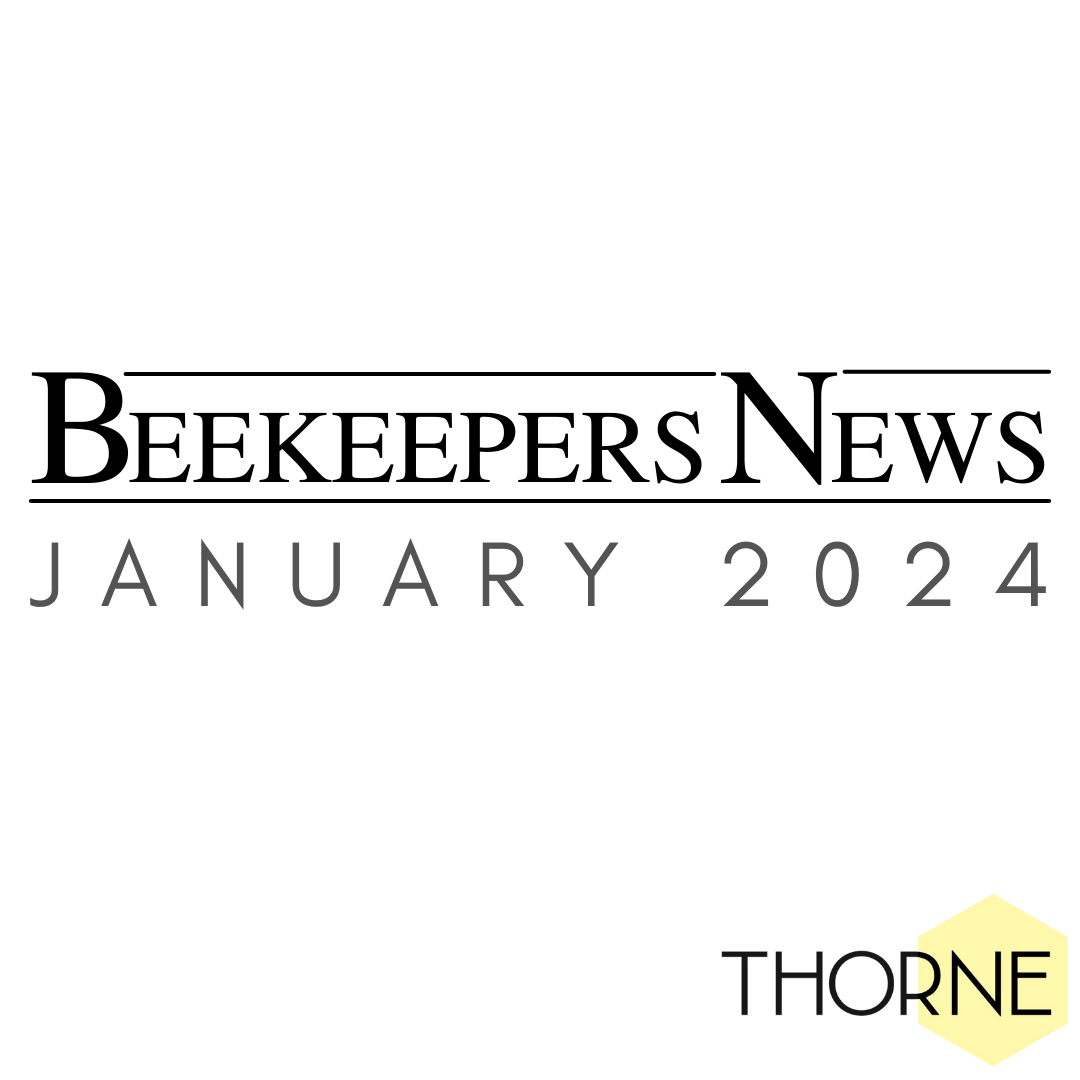February Roundup
The final winter sale orders were fulfilled in February. Thank you for your patience at such a busy time of year for us.
Many of you will be reading this after attending the first show of the year – Bee Tradex - held at Stoneleigh in Warwickshire. This has become a fixture on the beekeepers calendar and we trust you all had an enjoyable day browsing the trade stands and attending the lectures. If you do manage to read this before attending Tradex then please try and find time to listen to Marcele from Vetopharma talk about Apivar. This will be on the schedule at around lunchtime.
We have been busy finalising and printing the new catalogue this month. Most of you should have received your copy by now. This is always a challenging couple of weeks and the Thorne team pull out all the stops to make sure they are all sent out before the season gets underway.
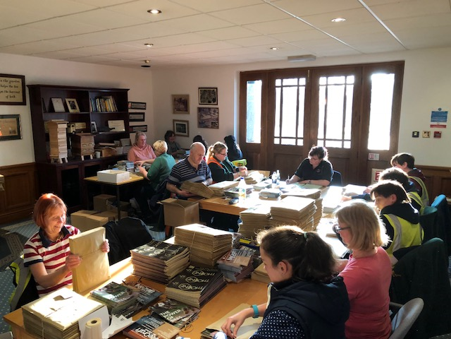
The photos show the pallets of catalogues arriving on site and the ‘envelope stuffing’ well underway. If you haven’t received your catalogue then please email sales@thorne.co.uk.
As we manufacturer or receive the new items they will be added to our website. Check these out at https://www.thorne.co.uk/whats-new
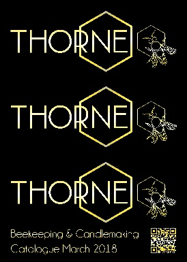
We will be sending out emails in the next couple of months to ensure we comply with the new GDPR regulations. If you wish to continue receiving emails and newsletters from us then please click through the links to ensure that you successfully re-subscribe.
Equipment Focus………
Over the winter months our R&D department have developed a new flexible product that should make many beekeeping jobs both easier and even more interesting!
Along the same principle as the Adapta Hive Stand, the multi-purpose Adapta Eke consists of a variety of ledges and boards that are interchangeable depending on the manipulation you are carrying out.
One of the most innovative uses of the Adapta Eke is the optional upper entrance that is revealed by removing the shaped galvanised closure. This upper entrance could completely change the way we use a vapouriser to combat varroa.
When planning your varroa treatment using a vapouriser, careful thought needs to be given to doseage, weather conditions, PPE and to how you will actually perform the task.
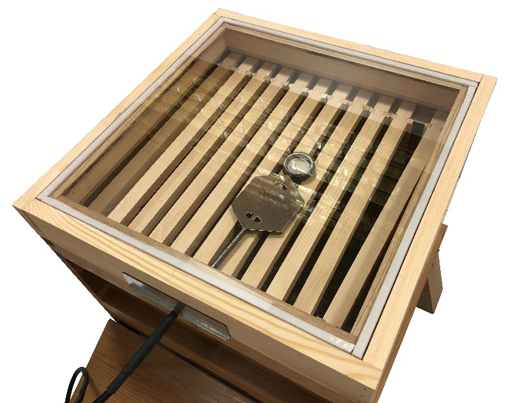
Through the traditional entrance, under the mesh floor, insert in or out, fully sealed or only partial, how long for etc. There is a lot to think about, not least of which is the fire risk involved with vapourising through the floor when you cannot see what you are doing. There have been numerous instances of hives igniting due to brace comb coming into contact with the hot vaporiser or the vaporiser tilting and burning the floor and if this happens to be polystyrene you can soon have a conflagration.
The Adapta Eke affords the beekeeper the opportunity to use a vaporiser safely from above the brood nest and by looking through the clear observation panel you can see exactly what you are doing and how long you are doing it for!
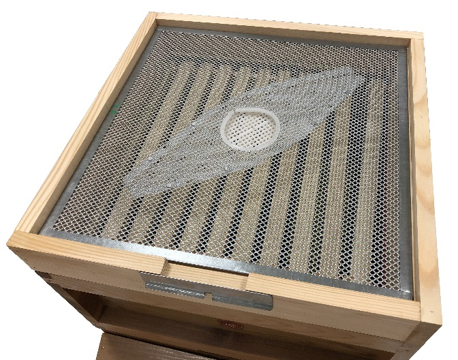
As well as safe vaporising the Adapta Eke will make clearing and feeding so much easier and more amenable to your bees. By using the mesh boards, syrup feed and cleared honey supers will be kept warm by the heat generated from the brood nest.
Or you can simply experiment with a variety of clearing methods and find the most suitable for your beekeeping.
Ask our Expert
So much for Global Warming!
Although you may not want to go outside… there are a few things you can do to help your bees at this time… If your bees are on open mesh floors, put the Corex sheet in underneath to cut down on the cold reaching the cluster. You can check it from time to time, as the rubbish (cappings) will drop down between the frames to rest on the card. If you clean the card each time you inspect it, this gives you a good indication of the size of the cluster, its position in the hive, how much the cluster is moving, and the amount of stores they are uncapping. This gives you an un-intrusive way of monitoring cluster activity.
If you have snow on or around the alighting board/entrance of the hive, it is a good idea to brush it away. Bright light reflected off the snow may encourage your bees to come out, something they should be discouraged from doing.
Most colonies will have started the build up to spring, which may be postponed a few weeks. Check levels of stores, and add fondant if needed. A pollen substitute may prove beneficial to the recovery once the weather improves.
You can give them a supply of fresh rain water (not tap, it has additives) at the entrance in an entrance feeder. This helps the bees in expanding and cleaning the nest without losing too many foraging water collectors.
The only way you can “see” what is happening inside the hive without disturbing or opening your bees is to use an infrared camera… in which case you should see something like this, and will know all is well.
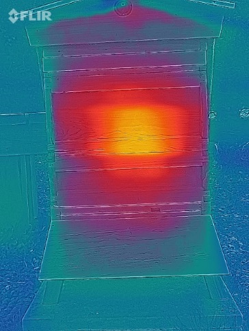
Thanks to Mary Bains for the picture.
Beekeeping Blog
The first signs of spring have started to appear this month, with snowdrops popping up all over the Lincolnshire countryside. This has provided some much-needed forage for our bees. Despite this, February has been a cold month. We have seen a small amount of activity here with some bees bringing in pollen but as the temperatures have dropped over the last few weeks, our main priority has been to heft the hives and make sure the colonies have enough stores.
For those colonies that need a little extra help, we have provided them with Nektapoll, a pollen substitute, which really seems to give the bees a boost while they can’t go out to forage in these cold temperatures.
We have also been getting the relevant equipment ready in preparation for the season ahead. Hive parts have been cleaned, bee suits have been washed and the new cabin has been set up ready for making all the necessaries for the season ahead.
All in all, February has been a quiet month so we are hoping that March will bring some milder weather and that we can get stuck in to this year’s beekeeping!
If you require any more information, please send an email to Alexandra at sasha@thorne.co.uk who will be happy to help or call one of our sales team on 01673 858555.
Bees for Development Update
This month Janet Lowore, Programme Officer for Africa at Bees for Development writes:
When I reached Bahir Dar airport on my way home after working with Bees for Development Ethiopia, the luggage handler looked at the large bundle I was carrying alongside my suitcase and asked: “Is that a honey net?” I confirmed that it was. The brand new ‘honey net’ (beehive) I was bringing back from Ethiopia was a typical Lake Tana-style, a simple cylinder, woven from sticks. Bees for Development is very open-minded about beehive types, as we are aware that all designs have advantages and disadvantages, and people rate these features according to their own preference.
Our colleague in Ethiopia, Tilahun Gebey, teaches people to make top-bar hives using Eucalyptus poles and thin sticks for the hive body, and top-bars, also made from Eucalyptus wood. Yitateku Azene is pleased with the top-bar hives – saying, “They are easy to make and easy to harvest. The money I get from bees pays for college fees for my children”. Yitateku further explained, “the only problem is that I do not have a saw to cut the poles and have to borrow from the government Farmer Training Centre – and I have to wait my turn”.
If you would like to make a donation to Bees for Development and help us buy more tools for beehive making, you can do so here http://www.beesfordevelopment.org/give-a-donation/ . And if you would like to see our Ethiopian ‘honey net’, come and visit us in Monmouth, South Wales
Birthday Giveaway
We are celebrating 25 years of Bees for Development with special prizes every month. In March you have the chance to win a high power SP22 microscope - perfect for pollen analysis and a complete Pollen Identification Kit, generously donated by Brunel Microscopes. Why not learn more about your bees this year by identifying the pollen they are bringing home?' This top quality microscope meets the specification required by the BBKA for microscopy exams. For a chance to win, simply enter your details: http://www.beesfordevelopment.org/giveaway/index.html
National Honey Show News
As well as at Beetradex, Stoneleigh, on Saturday 3rd March, The National Honey Show will be taking a stand at the BBKA Spring Convention at Harper Adams on 14th April. Come and talk to us about the show; collect leaflets and raffle tickets for distribution; and also chat to us if you’re interested in exhibiting your stunning honey, hive products, crafts; taking a trade stand; or any other aspect of the show.
Lecturers booked so far for 2018 include Michael Smith and Clarence Collison, both from the US. Both will give 4 lectures. There will also be the Friday Bee Craft programme of lectures from young UK bee scientists, and the popular Saturday programme for newer, and “thinking about it” beekeepers.
The National Honey Show, 25 to 27 October 2018, Sandown Park Racecourse, Esher, KT10 9AJ www.honeyshow.co.uk. Unmissable. See you there.
Upcoming Events
Ulster Beekeepers Convention - 9th and 10th March
Welsh Beekeepers Convention - 24th March
BBKA Spring Convention (Trade Show) - 14th April
